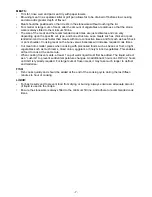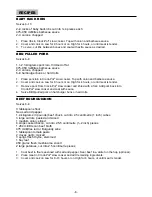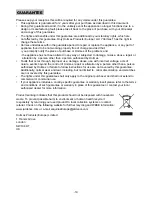
-7-
MEATS:
• Trim fat, rinse well, and pat meat dry with paper towels.
• Browning meat in a separate skillet or grill pan allows fat to be drained off before slow cooking
and also adds greater depth of flavour.
• Meat should be positioned so that it rests in the stoneware without touching the lid.
• For smaller or larger cuts of meat, alter the amount of vegetables or potatoes so that the stone-
ware is always filled to the minimum fill line.
• The size of the meat and the recommended cook times are just estimates and can vary
depending upon the specific cut, type, and bone structure. Lean meats such as chicken or pork
tenderloin tend to cook faster than meats with more connective tissue and fat such as beef chuck
or pork shoulder. Cooking meat on the bone versus boneless will increase required cook times.
• Cut meat into smaller pieces when cooking with precooked foods such as beans or fruit, or light
vegetables such as mushrooms, diced onion, eggplant, or finely minced vegetables. This enables
all food to cook at the same rate.
• When cooking frozen meats, at least 1 cup of warm liquid must first be added. The liquid will act
as a “cushion” to prevent sudden temperature changes. An additional 4 hours on LOW or 2 hours
on HIGH is typically required. For larger cuts of frozen meat, it may take much longer to defrost
and tenderise.
FISH:
• Fish cooks quickly and should be added at the end of the cooking cycle during the last fifteen
minutes to hour of cooking.
LIQUID:
• For best results and to prevent food from drying or burning, always ensure an adequate amount
of liquid is used in the recipe.
• Ensure the stoneware is always filled to the minimum fill line, and adhere to recommended cook
times.
Содержание SCCPBPP605
Страница 13: ...notes 13 ...
































